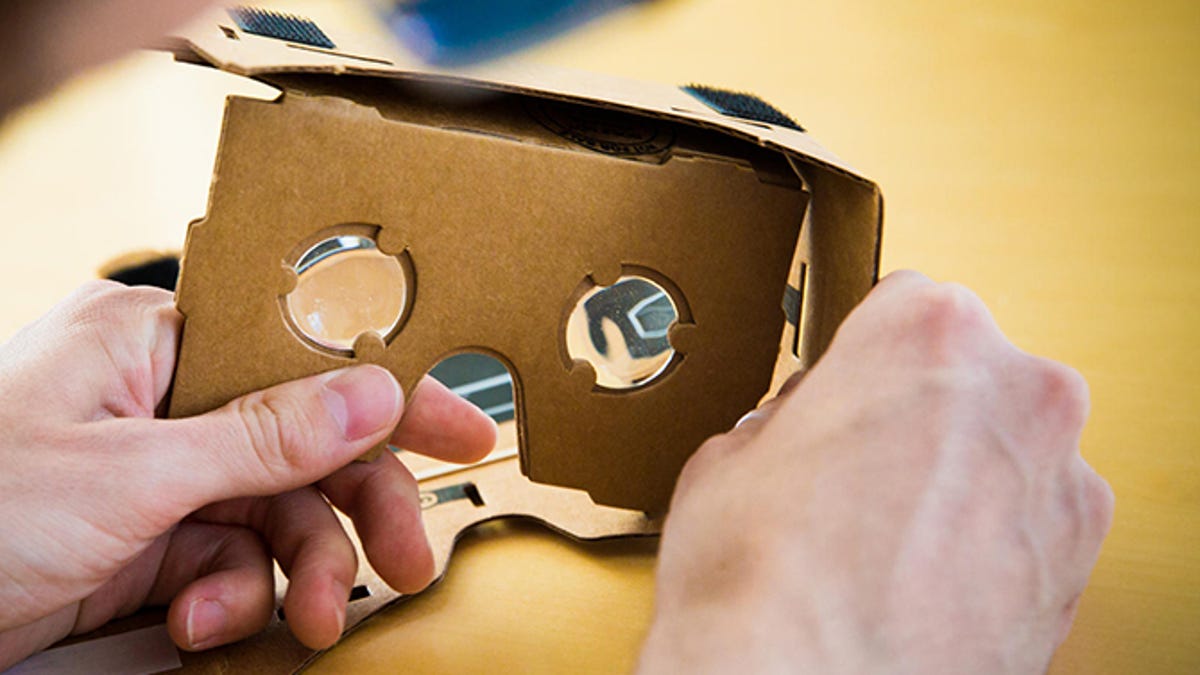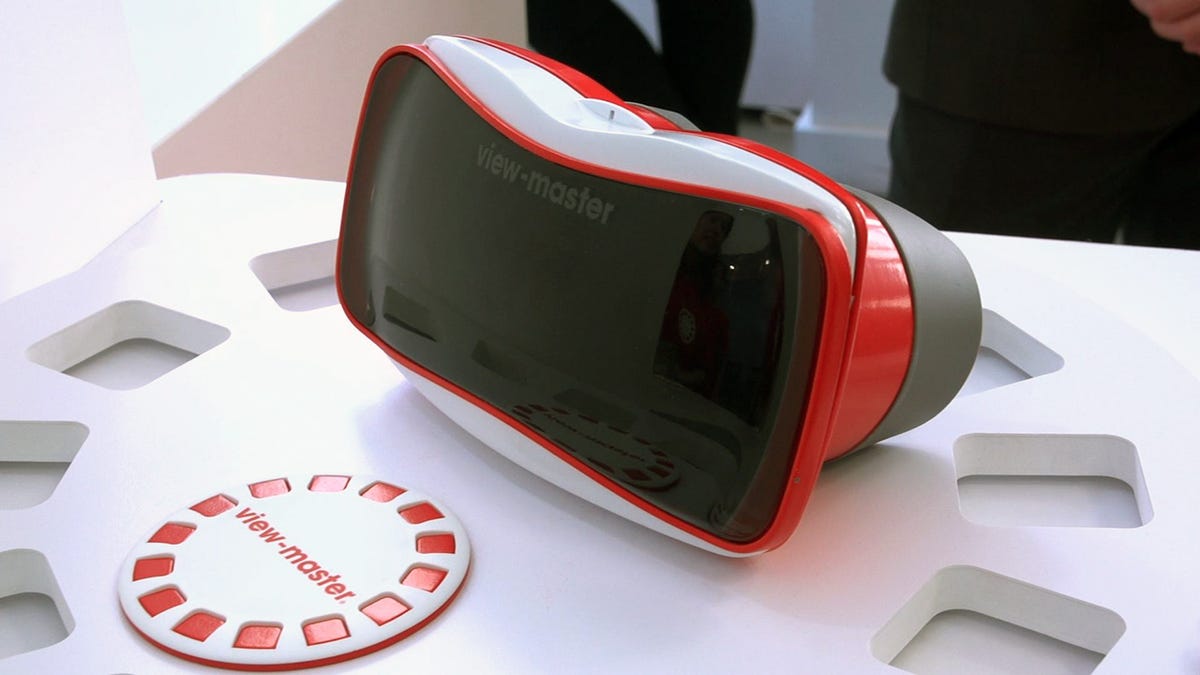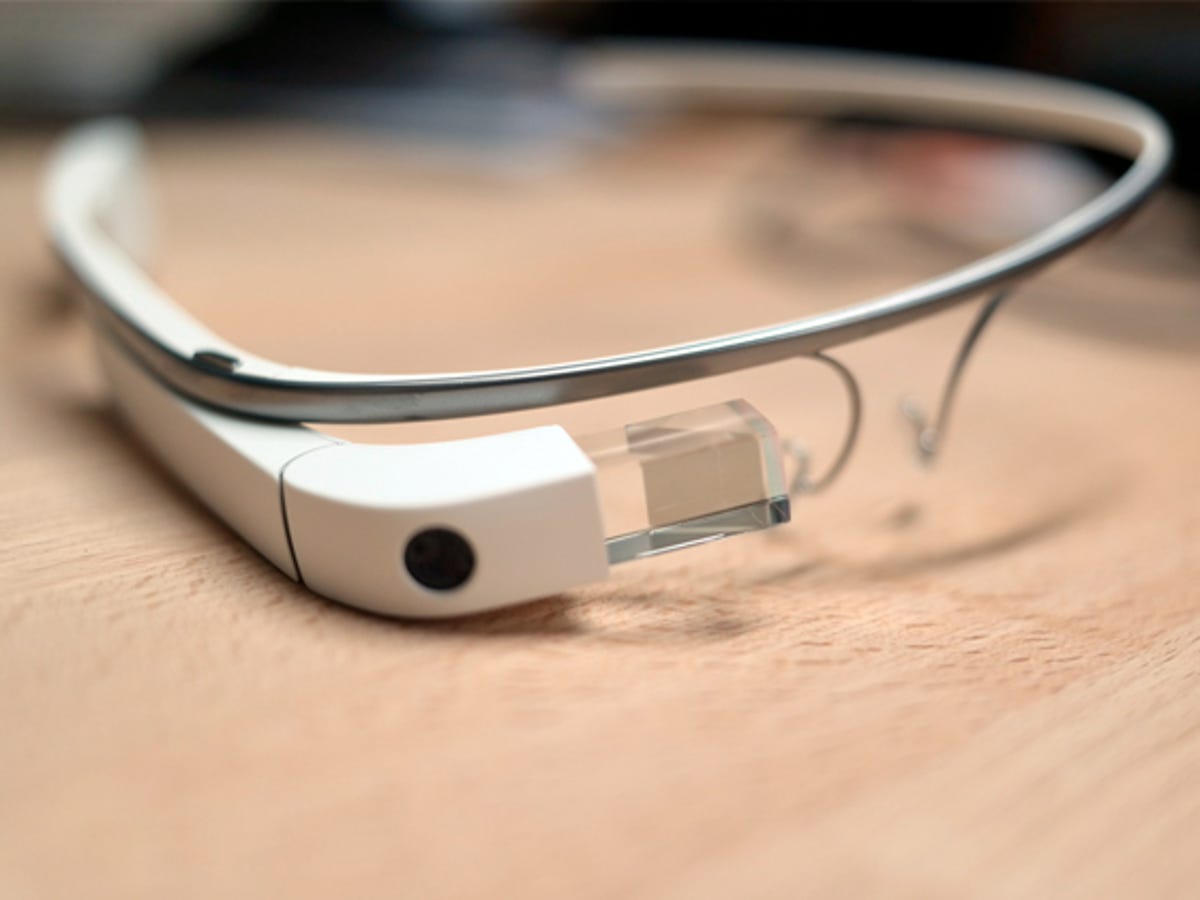
CNET
Virtual and augmented reality have been sprouting up everywhere in 2015, but Google’s had its hands in VR and AR since last year’s Google I/O developer’s conference. This year it could be poised to do even more.
Virtual-reality devices, like the Oculus headset, close us up into the a separate world, cutting off reality completely. Google’s current version is Cardboard, a dirt-cheap take on VR that mounts your phone on your face with stiff brown paper.
Then there’s augmented reality, which overlays virtual things onto our vision, seeking to enhance the world around us rather than replace it. Google has already dabbled in AR, first with the Google Goggles apps, most famously with its wearable Google Glass , and most recently with its 3D depth-sensing Project Tango tablet.
Here’s what could come next.


CNET
Cardboard evolves into Google VR
Cardboard, Google’s simple, nearly disposable and pretty brilliant virtual reality solution, is practically a novelty: a foldable cardboard set of stereoscopic goggles that you can put a phone into. It was handed out like a party favor at the end of last year’s Google I/O developer conference keynote. It demonstrated how VR could be something cheap, ubiquitous, and ready to make right now, a counterpoint to more expensive, specialized gear from Oculus and other manufacturers.
This year, the quality of those affordable goggles, and of the apps, could ramp up: less hobby DIY, and more cheap, fun accessory.
Mattel is making a Cardboard-compatible ViewMaster-branded toy that’s coming out in the fall. Google could announce more types of cheap VR-goggle accessories, and also a more evolved collection of apps and experiences that Cardboard VR can engage in. Maybe Google will brand Cardboard into something more immediately recognizable, too: right now, many people I know outside of tech don’t even know that Google Cardboard exists, or what it does.
YouTube: A perfect home for VR videos?
Already, 360-degree panoramic videos — both in 2D and 3D — are one of the killer apps for VR devices that exist right now, but you need to have a spherical camera (a camera that shoots panoramic video), and an app to host those videos. Samsung launched Milk VR earlier this year, an app that shows a rotating mix of streaming videos on the Oculus-made Gear VR . Oculus’ own 360 Video app does something similar.
But YouTube could end up being the best place of all for future video content. YouTube could, and should, be a place where VR-ready videos are easy to upload, or even convert to be Google Cardboard-ready. It would make a lot of sense for Google to create and expand a Cardboard-ready area of YouTube.


Now playing:
Watch this:
Hands-on with Google’s Project Tango
0:55
Augmented reality project 1: Project Tango
Microsoft’s HoloLens , the most prominent current example of this tech, uses a headset and a 3D depth-sensing camera based on the Xbox Kinect camera to make hologram-like 3D graphics appear to exist in your office, or living room.
Google has already explored augmented reality, to some degree, going back to last year. Project Tango, a tablet with 3D depth-sensing cameras, was demoed at year’s conference along with a VR-type headset it slotted into. It could layer virtual effects into the real world, to a degree: a crude demo I tried made it look like the conference hall I was in was filled with water and fish.
Having good 3D depth-sensing cameras to determine where walls, floors, and objects are is key for making 3D graphics seem to exist in the real world, and stay in the proper place as you move. It’s that part — depth-sensing 3D, and its applications — that Google could continue exploring at Google I/O. Project Tango could be the key.


Magic Leap
Augmented reality project 2: Magic Leap
The biggest unknown quantity in augmented reality might be Magic Leap, a very secretive Florida-based company that promises to deliver magical overlaid graphics into the real world with unparalleled realism. Few people have experienced Magic Leap, and it hasn’t been formally unveiled anywhere yet. (WETA, the special-effects house behind Lord of the Rings, co-created a demo video of what a video game overlaid in the real world could feel like using Magic Leap.)
Magic Leap projects images onto your eye in a way similar to Microsoft HoloLens, but there could be differences in how the technology is employed. Google is an investor in Magic Leap, but to what extent will this technology emerge into a product, or a platform, and when, is a complete mystery. Maybe Google could use its developer conference to give a peek.
Maybe Magic Leap and Project Tango could intersect. Maybe Google can show us why augmented reality is a good idea, or a cool idea. Microsoft has impressed a lot of people with HoloLens. Can Magic Leap do the same?
A VR-based Android OS?
Maybe Google will reach even further, developing Android into a VR/AR-specific variant that could allow many apps to work in virtual and augmented spaces.
What’s the point, you ask? If augmented reality is striving for the future of desk-based productivity — as Microsoft has suggested in its concepts for HoloLens — then enabling Android to do more in VR and AR would make sense. At some point, we’ll be discussing multitasking and even working in virtual worlds. Google could be in a strong position to help explore those possibilities.


CNET
Can Google make a new product that makes people excited?
Google Glass was a weird failure of sorts, but it did capture attention, excitement, fear, disgust and curiosity. Last year’s Android Wear debut was a little less exciting, but it resulted in real smartwatch products.
Google Cardboard, Project Tango and all of its latest VR/AR efforts have really been experiments, not full-blown fully-fleshed gadgets. Will Google strike out and make another bold product, one that will actually be available to buy, instead of just another weird demonstration at a developer conference? Can Google help make people care about virtual reality, or augmented reality, and make a bigger, more impressive splash than Oculus or Microsoft?
Google I/O begins soon and we’ll be there.



